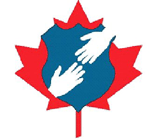|
Working
Together -- How?
There are a variety of ways in which the
police and the mental health system can work together to manage first
response situations—those situations in which the police are called
to deal with an incident involving a person who appears to be mentally
ill. Some case are clear cut—the person in question has committed
a significant offence, or the person making the call knows what the
disposition of the case should be and merely needs your assistance to
make it happen. But often, it is not clear what the most desirable outcome
is and the frontline officer could use some assistance in making an
appropriate decision. How can the police and the mental health system
work together? There are several models that have been employed. There
is no evidence at this point that any one model works better than any
other model. A variety of factors come into play—the size of the
police service, the available mental health resources, the geographical
area served, the previous training of officers, existing internal expertise,
police service and mental health services commitment of time and money
to this issue, the relative size of the problem, pre-existing hospital/police
relationships….
There is no clear right answer. But there
are options--options which can be used alone or in combination:
- Comprehensive advanced response model–in which
all police officers receive training related to working with individuals
with mental illness. Thus there are no singular experts but all
members have an increased level of knowledge and understanding and
are expected to be able to handle most situations
- Mental health professionals co-response model, in
which case mental health professionals from another agency with
whom the police would have some kind of working agreement would
respond to a police call at the request of the police, generally
after the police have responded and assessed the situation (although
some agencies co-respond immediately) (ex: Montreal)
- Mobile crisis team co-response models— models
in which the police and the mental health workers are co-employed,
sometimes by having mental health workers employed by police services
and sometimes by having police officers seconded to community mental
health agencies (ex: Toronto, Vancouver, Hamilton, Ottawa)
- Crisis intervention team (CIT) –in which specially
trained officers respond to problematic situations. These officers
are assigned to other duties (such as traffic patrol) from which
they may be pulled as needed (the “Memphis Model”)
- Telephone consultation models--probably most effective
in remote and rural areas where mental health resources are not
readily available. Police have a toll free number to a mental health
unit or hospital psychiatry floor which is staffed 24/7 and whom
they may call whenever there is an incident to get advice and direction
(ex: remote areas of British Columbia)
- The “cross your fingers” method—in
which mental health staff and police officers simply rely on the
system to work and hope someone will be around/agreeable when a
problem comes up. It works amazing well at times and in some places!
(lots of places!!)
|
|
